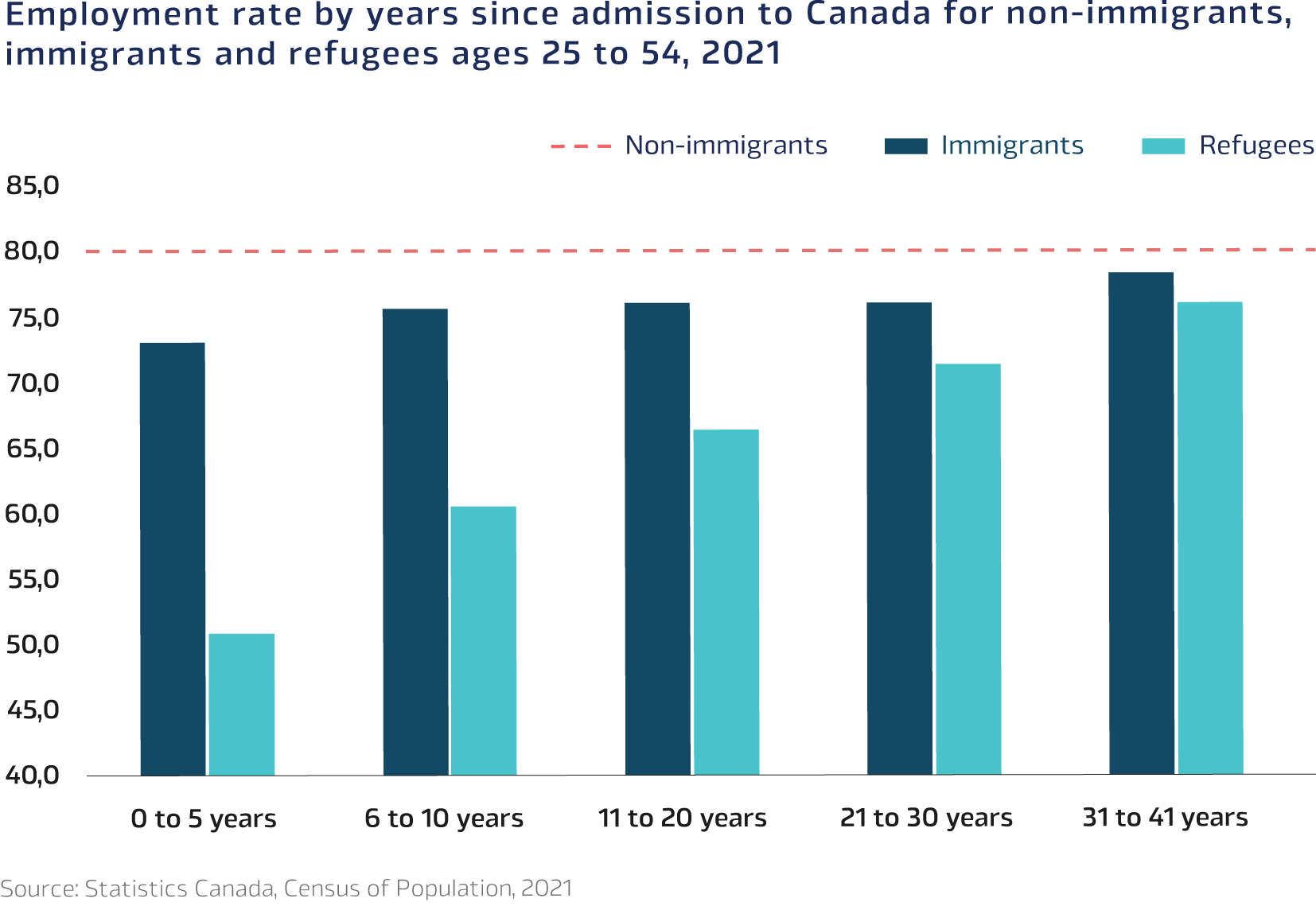Canada
Data integration for better analysis
of socio-economic outcomes for refugees
Background
Canada’s immigration levels reached a record high including both permanent immigrants and non-permanent residents (NPRs). These trends have raised political and media attention, leading to an increased demand for accurate and timely statistics, research, and analysis.
With a robust statistical system built on administrative records, Canada regularly produces high quality and disaggregated refugee statistics. In response to the growing demand, Statistics Canada, Canada’s national statistical organisation, is taking steps to strengthen the timeliness of its data products and to produce more statistics on the socio-economic outcomes of refugees and asylum-seekers.
Central to this effort are the administrative records managed by the Immigration, Refugees and Citizenship Canada (IRCC) department. In partnership with Statistics Canada, IRCC data were integrated with other key data sources, notably the Census of Population and quarterly demographic estimates.
Longitudinal Immigration Database
Statistics Canada, in collaboration with IRCC, has developed the Longitudinal Immigration Database (IMDB) that identifies key socio-economic outcomes, including for refugees. Created in 1998, it includes data for all immigrants since 1952 and non-permanent residents since 1980, linking IRCC immigration data with other databases including, primarily, information on taxation from the Canada Revenue Agency. [1]
The IMDB is annually updated and contains long-term outcomes by admission category, including refugees, and non-permanent resident type, such as asylum claimants. The data covers socio-demographic characteristics such as knowledge of official languages, country of birth, education, admission category, and economic characteristic s such as income and geographic mobility. It is linked to other administrative data and surveys conducted by Statistics Canada such as the census and the Postsecondary Student Information System with in-depth information on outcomes of immigrants and non-permanent resident population in Canada.
Census of population
Statistics Canada has worked to improve data and analysis on refugees and statelessness through the Census of Population. Conducted once every five years, the Census has collected information on immigrant status, year of immigration and citizenship since 1901 and place of birth since 1871.
In 2016, the census integrated IRCC’s administrative data to include the admission category of immigrants. The mixed methodology approach provided detailed information on the conditions under which immigrants were granted the right to live in Canada.
Since 2021, data on immigrant status and year of immigration are no longer asked on the census questionnaire and are replaced by administrative records to reduce burden and improve data quality. This change has allowed for more disaggregated data for refugees and can provide information on place of birth, place of birth of parents, languages, ethnocultural and religious characteristics and socio-economic outcomes such as education, income, and labour force engagement.
Results for the 2021 Census were published in October 2022. [2] They also provide information on the stateless population using the citizenship question. Demographic Estimates Based on the integration of census and administrative data, the Demographic Estimates Program (DEP) provides accurate and timely data on quarterly migration flows.
Demographic Estimates
Based on the integration of census and administrative data, the Demographic Estimates Program (DEP) provides accurate and timely data on quarterly migration flows. [3] Refugees are included as immigrants. Data on the number of NPRs by permit type, where asylum claimants are a category, are also disseminated quarterly. [4]

The use of the International Recommendations
Although refugee data has been produced by Canada’s national statistical system for many years, the International Recommendations on Refugee Statistics (IRRS) are recognised and used as a reference point for Statistics Canada’s ongoing work. The IRRS have become a useful reference guide informing the selection and validation of indicators and have helped refine identification approaches for refugees within the wider immigrant population.
The statistical coordination recommendations outlined in the IRRS, also remain relevant in the Canadian context. Partnership and collaboration between data providers and producers of official statistics, where regular information sharing and a clear recognition of the mutually beneficial relationship, are essential.
Conclusion
This case presents an interesting example on how data integration, based on administrative data, has made available comprehensive and detailed information on refugees. Statistics Canada has combined different strategies, to reach both robust and detailed information as well as timely statistics.
With the IRRS as the guiding framework, Statistics Canada regularly reviews compliance and opportunities to better refugee statistics with a focus on internationally comparable indicators while responding to country-specific demands such as linguistic characteristics. The case study illustrates the value of effective statistical coordination.
